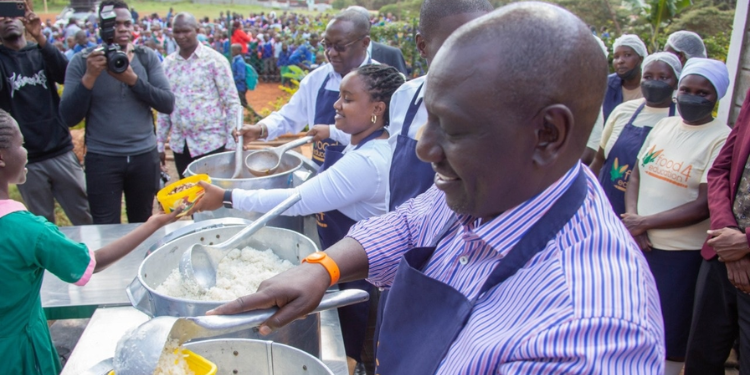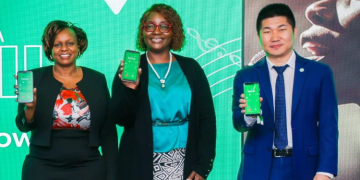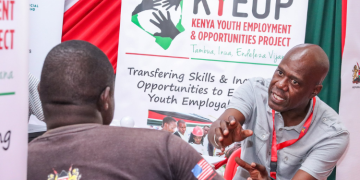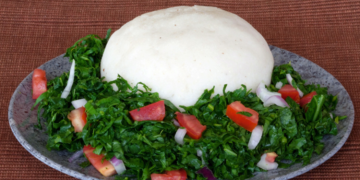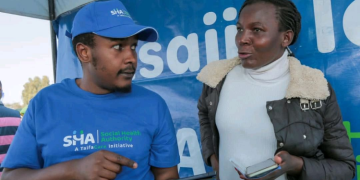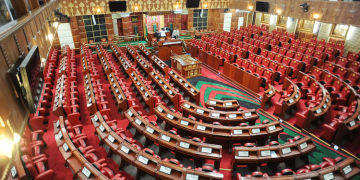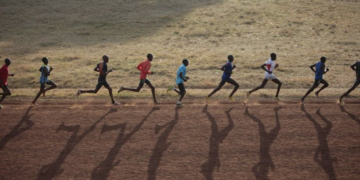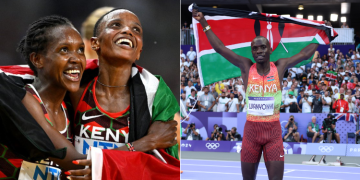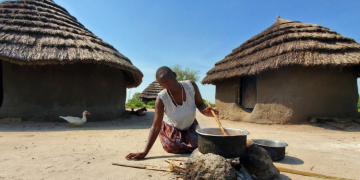A bright yellow wristband, Tap2Eat, worn like a watch, is quickly becoming one of the most recognizable accessories in Nairobi, not for fashion, but for its power to fight hunger and transform education.
Dubbed Tap2Eat, the digital wristband is the centrepiece of Nairobi County’s school feeding revolution under the Dishi na County program, which provides hot, nutritious lunches to public school children for just five Kenyan shillings a day.
The NFC-enabled device allows students to tap their wristbands at lunchtime to pay for meals instantly.
Behind this is a system tracking attendance, enabling transparent payments, and ensuring that every child has access to food, even if they can’t afford it.
Tap2Eat Smartwatch
Governor Johnson Sakaja, often spotted wearing the same band in solidarity, has praised the device as a symbol of dignity and equality.
“This is not just a feeding program. It’s a full ecosystem. It’s digital, it’s local, and it’s about our children,” Sakaja said during a briefing.
Also Read: Sakaja to Build Rental Houses for Albert Ojwang’s Father
Since its launch in August 2023, the Dishi na County initiative has served over 30 million meals.
Originally starting with 10 central kitchens, the program now operates 17 kitchens across Nairobi’s sub counties, feeding over 310,000 pupils daily from public primary and ECD schools.
The Tap2Eat technology was developed by Kenyan innovators through the Food for Education Foundation.
How it Works
Additionally, NFC wristbands are free for students, linked to a virtual wallet that parents can top up via M-Pesa.
A simple tap at school deducts Sh5, logs the transaction, and even sends a message to the parent confirming the child has eaten.
“They love the watches. Some don’t even take them off at home,” Sakaja said. “It gives them dignity. It tells them someone sees them.”
The system also flags when students skip school and allows education and nutrition officials to track attendance and optimize food preparation, reducing waste while increasing efficiency.
Also Read: Four Killed in Late Night Tragedy in Congo Kawangware
If a child can’t pay, the county steps in to cover the cost.
What it has achieved
The program has already shown measurable results with upto 34% since the initiative began, and the county is now working with the national government to address a growing demand for classrooms.
Over 5,000 Nairobi residents are employed through the initiative, and farmers across the country benefit from new, consistent demand.
The Tap2Eat system is also expanding beyond Nairobi, with operations now in five counties including Kiambu, Muranga, Mombasa, and Kisumu and a goal to serve 60 million meals by the end of 2025.
During a recent visit with World Food Program leaders, Sakaja called Nairobi’s school feeding model a “Silicon Savanna solution,” rooted in Kenyan innovation.
“Every shilling is accounted for. This is the future of education, powered by nutrition and technology,” he said.
Follow our WhatsApp Channel and X Account for real-time news updates.
